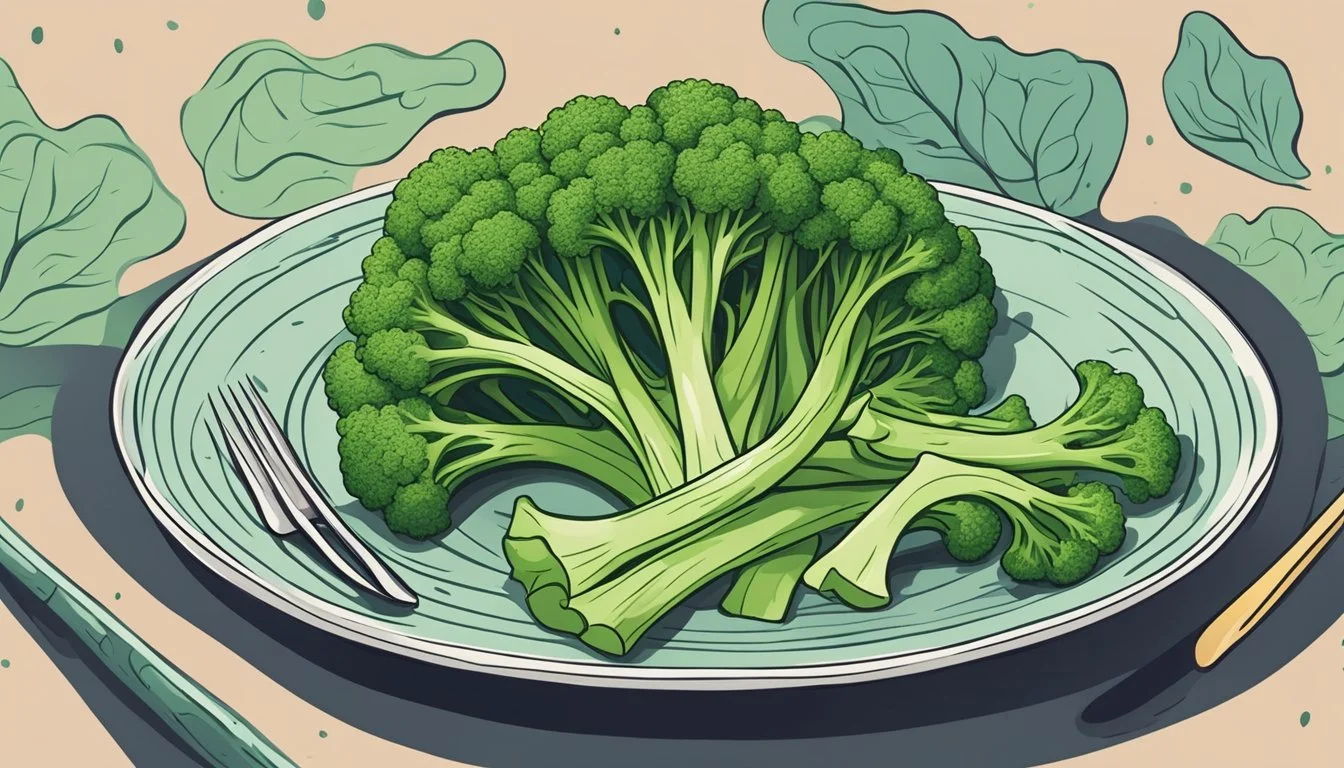Power Foods That Help Ease Period Cramps Naturally
For many individuals, period cramps can be a challenging experience impacting daily activities. Finding natural ways to mitigate this discomfort can be incredibly beneficial. An essential avenue to explore is the role of diet in influencing menstrual pain.
Certain foods have properties that may help alleviate cramps, making dietary choices a key factor in managing period pain. Understanding which foods to include and avoid could be a game-changer for many seeking relief.
1) Ginger Tea
Ginger tea is a popular natural remedy for menstrual cramps. It is known for its anti-inflammatory properties, which help reduce the pain associated with menstrual discomfort. The active compounds in ginger, such as gingerol, work to alleviate muscle spasms and improve blood circulation.
Consuming ginger tea during menstruation can provide significant relief. The warmth of the tea can also offer a soothing effect on the pelvic region, further helping to ease cramps.
Studies suggest that ginger can be as effective as some over-the-counter medications. Drinking two to three cups of ginger tea per day can help manage the intensity of cramps.
To make ginger tea, fresh ginger root is steeped in hot water for about 10 minutes. Adding a touch of honey or lemon can enhance the flavor and provide additional health benefits.
Ginger tea is generally safe for most people. However, those with certain health conditions or allergies should consult their healthcare provider before incorporating it into their routine.
Ginger tea is an accessible and natural option for those seeking to reduce menstrual pain. Its effectiveness and ease of preparation make it a go-to remedy for many individuals.
2) Dark Chocolate
Dark chocolate can be beneficial for those experiencing period cramps. It contains magnesium, a mineral that helps relax muscles and reduce pain.
The flavonoids in dark chocolate have anti-inflammatory properties. These can help reduce the inflammation which often exacerbates menstrual pain.
Consuming dark chocolate may also boost serotonin levels. This neurotransmitter can improve mood, which is often affected during menstruation.
A few studies suggest that dark chocolate can specifically reduce pain related to menstrual cramps. It’s most effective when the cocoa content is high, ideally above 70%.
To reap these benefits, it’s best to consume dark chocolate in moderation. A small amount daily during the menstrual period can be helpful.
3) Bananas
Bananas are a nutritious and convenient snack that can help alleviate period cramps.
They are high in vitamin B6, which can reduce bloating and water retention. This helps to lessen cramping and discomfort.
Rich in potassium, bananas also aid in muscle function and can prevent muscle cramps and spasms.
Including a banana in your diet provides natural energy and may improve mood swings due to their tryptophan content.
Bananas' easy digestibility makes them a gentle food choice when dealing with digestive issues during menstruation.
Adding bananas to smoothies, cereals, or eating them as is can be a simple way to benefit from their nutrients.
4) Chia Seeds
Chia seeds are a valuable addition to the diet for those experiencing period cramps. They are rich in omega-3 fatty acids, which possess anti-inflammatory properties that can help reduce menstrual pain.
These tiny seeds are also high in magnesium, a mineral known to alleviate muscle cramps. Magnesium works by helping muscles relax, thus reducing the intensity of uterine contractions.
Moreover, chia seeds are packed with fiber, which supports healthy digestion. Proper digestion can ease bloating, a common discomfort during menstrual periods.
Including chia seeds in meals is easy. They can be added to smoothies, yogurt, or salads. Their neutral taste makes them versatile, fitting well into various dishes without altering the overall flavor.
Chia seeds also provide a good source of protein and antioxidants. These nutrients can help stabilize mood swings and maintain energy levels during menstruation.
By incorporating chia seeds into a balanced diet, individuals may find a natural and effective way to manage period cramps and associated symptoms.
5) Salmon
Salmon is a powerful addition to the diet for combating period cramps.
Rich in omega-3 fatty acids, salmon helps reduce inflammation in the body. This reduction in inflammation can alleviate the intensity of menstrual cramps.
Furthermore, salmon is packed with vitamin D and B vitamins.
Vitamin D works to regulate the production of prostaglandins, compounds that are associated with increased menstrual pain. Meanwhile, B vitamins support overall muscle function, potentially easing cramps.
Salmon also provides a high-quality protein source. Protein is essential for maintaining muscle health and can aid in preventing muscle spasms during menstruation.
Incorporating salmon into meals is versatile and easy. It can be grilled, baked, or added to salads and pastas, making it a convenient and nutritious option.
For best results, aim to include salmon in your diet a few times a week. This regular intake will help maintain beneficial levels of omega-3s and vitamins in the body.
By including salmon in your diet, you can target the underlying causes of menstrual discomfort and support overall well-being during your cycle.
6) Avocado
Avocados are a nutrient-dense food that can offer several benefits during menstruation. Rich in antioxidants and essential vitamins, they are particularly good at helping reduce inflammation. This can lessen the pain associated with period cramps.
The healthy fats in avocados, such as monounsaturated fats, can also support hormone balance. Hormonal fluctuations often contribute to cramping, so maintaining balanced levels might alleviate some discomfort.
Additionally, avocados are high in potassium. Potassium can help manage muscle contractions, reducing the severity of cramps. Consuming avocados can be an effective natural way to provide the body with this important mineral.
Moreover, avocados offer a source of magnesium, which also plays a role in muscle relaxation. This can further contribute to easing menstrual cramping. Many women find that incorporating avocados into their diet helps them feel better during their periods.
They can be eaten in various forms, such as in salads, smoothies, or even on toast. Their versatility makes them easy to include in different meals. By adding avocados to one's diet, it is possible to take advantage of their multiple period-cramp-relief properties.
7) Broccoli
Broccoli is packed with nutrients that can help alleviate period cramps. This green vegetable is rich in calcium, which plays a role in reducing muscle spasms and cramping.
Additionally, broccoli contains fiber, which can help alleviate digestive issues often associated with menstruation.
Broccoli is also high in antioxidants, which help reduce inflammation and ease menstrual pain. Pairing broccoli with other calcium-rich foods can enhance its benefits.
Incorporating broccoli into meals is simple, whether sautéed, steamed, or added to soups and salads. This versatile vegetable can be easily included in a variety of dishes, making it a valuable part of a menstrual pain-relief diet.
8) Almonds
Almonds are packed with essential nutrients that can alleviate period cramps.
They are a great source of magnesium, which helps relax muscles and reduce cramping. Magnesium also plays a role in controlling nerve function, which can further mitigate discomfort during menstrual cycles.
Almonds contain healthy fats and proteins that provide sustained energy. This can help stabilize blood sugar levels, reducing mood swings and fatigue associated with menstruation.
Almonds also have anti-inflammatory properties. These properties help in managing pain and swelling, offering a natural remedy for menstrual discomfort.
Incorporating almonds into the diet can be simple. They can be eaten raw, roasted, or added to meals like salads and yogurt.
Regular consumption of almonds may help in long-term menstrual health, complementing other dietary choices aimed at reducing period pain.
9) Greek Yogurt
Greek yogurt can be a beneficial addition to the diet of those experiencing period cramps.
Packed with calcium, Greek yogurt helps to regulate muscle function. This can be particularly useful for easing the muscle contractions that lead to menstrual cramps.
Additionally, Greek yogurt contains probiotics which support gut health. A healthy digestive system can better manage inflammation, potentially reducing the severity of cramps.
With its rich protein content, Greek yogurt also provides a lasting source of energy. This can help alleviate fatigue that often accompanies menstrual cycles.
Incorporating Greek yogurt into meals or snacks can offer substantial relief. It can be paired with fruits, nuts, or used in smoothies for added nutritional benefits.
Greek yogurt is a versatile and nutrient-rich food choice. For those dealing with menstrual discomfort, it can be especially helpful.
10) Spinach
Spinach is an excellent addition to the diet when experiencing period cramps. It is rich in iron, which is crucial for replenishing the blood lost during menstruation.
The leafy green is also high in magnesium, a mineral known for relaxing muscles and reducing cramps. This can provide relief from the discomfort felt during menstruation.
Additionally, spinach contains vitamins A, C, and E, which support overall health. Including spinach in meals, such as salads, smoothies, or cooked dishes, can help manage period pain efficiently.
Regular consumption can also improve energy levels and boost mood, making it a versatile food choice during menstruation.
Causes Of Period Cramps
Period cramps, or dysmenorrhea, stem from various physiological and biological processes. These include hormonal fluctuations, intense uterine contractions, and inflammatory responses. Understanding the origins of these cramps aids in discovering effective remedies.
Hormonal Changes
Fluctuations in hormones, particularly estrogen and progesterone, occur throughout the menstrual cycle. Prostaglandins, hormone-like substances, increase in tissue near the time of menstruation. High levels of prostaglandins lead to stronger and more painful menstrual cramps. The rise and fall of hormones lead to the shedding of the uterine lining, accompanied by inflammation and pain.
An imbalance in these hormones can cause conditions like endometriosis. This increases the likelihood and intensity of cramps by impacting the cells outside the uterus. Estrogen dominance specifically exacerbates this pain, making it more severe during menstruation.
Uterine Contractions
The uterus undergoes rhythmic contractions to help excrete its lining. These contractions, necessary for the menstrual process, often cause pain when excessively strong. Prostaglandins again play a significant role here. High levels lead to more intense contractions, reducing blood flow and oxygen to the uterine muscles. This oxygen deprivation causes acute pain.
Intense contractions can also trigger cramping in other areas, such as the lower back and thighs. Managing these contractions often involves both dietary and medical interventions to reduce the production of prostaglandins.
Inflammatory Responses
The body's natural response to menstruation involves inflammation, heightened by elevated prostaglandin levels. Inflammation around the uterus can cause menstrual cramps and discomfort. Inflammation throughout the body can exacerbate the severity of these cramps.
Consumption of anti-inflammatory foods and reducing foods that trigger inflammation can aid in alleviating symptoms. Conditions like chronic inflammatory diseases can also make menstrual cramps more painful. Anti-inflammatory medications, such as NSAIDs, are often prescribed to manage inflammation-related pain efficiently.
By understanding these underlying causes, targeted dietary and medical strategies can be better employed to manage period cramps effectively.
Nutritional Support For Menstrual Health
Proper nutrition can be pivotal in managing menstrual cramps. Vitamins, minerals, and hydration all play significant roles in alleviating discomfort and supporting overall menstrual health.
Role Of Vitamins And Minerals
Vitamins and minerals are essential for reducing menstrual cramps. Magnesium helps relax muscles and reduces cramping; foods rich in magnesium include spinach, almonds, and avocados. Calcium also alleviates menstrual pain by aiding muscle function and reducing water retention; sources include dairy products, fortified plant milks, and leafy greens.
Vitamin B6 is beneficial for emotional symptoms like irritability and mood swings. Foods rich in B6 include bananas, chickpeas, and potatoes. Iron is crucial during menstruation to replenish blood loss and prevent anemia, found in lean meats, beans, and fortified cereals.
Hydration And Its Importance
Hydration is fundamental for menstrual health. Drinking enough water helps reduce bloating and supports kidney function, which can help alleviate menstrual pain. Water and herbal teas are excellent options for staying hydrated.
Dehydration can exacerbate cramps, so incorporating high-water content foods like cucumbers, watermelon, and strawberries can be beneficial. Electrolytes also play a role in hydration; consuming drinks or foods rich in potassium, sodium, and magnesium can help maintain the body's fluid balance. Avoid excessive caffeine and salty foods, as they can lead to dehydration and worsen symptoms.
Anti-Inflammatory Foods
Anti-inflammatory foods can significantly ease period cramps by reducing inflammation and muscle contractions. These include foods rich in omega-3 fatty acids, which are well-known for their anti-inflammatory properties.
Omega-3 Fatty Acids
Omega-3 fatty acids are essential for reducing inflammation and muscle spasms. Foods such as salmon, walnuts, and flaxseeds are excellent sources. Salmon is particularly noted for its high omega-3 content, which can help decrease cramp severity.
Walnuts and flaxseeds also contain alpha-linolenic acid, a type of omega-3 fatty acid that contributes to anti-inflammatory effects. Adding these foods to one's diet may offer relief from menstrual discomfort. Regular consumption of omega-3-rich foods can lead to lasting benefits during one's menstrual cycle.






